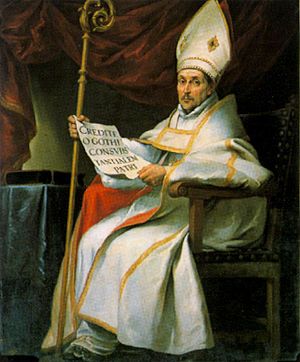The Church honors a Spanish saint that many I am sure have not heard about, or know very little of today, Saint Leander of Seville (c. 534-c.600). His parents were known to be pious, his brothers were the famous Saint Isidore of Seville and Saint Fulgentius of Ecija and his sister was Saint Florentina of Cartegena. Leander was both a Benedictine monk and bishop in Seville.
Holy people encourage others to be holy. Leander was a friend Saint Gregory the Great whom he met when Gregory was a papal legate. Apparently, Leander encouraged to Gregory to write his famous treatise on Job known as the Moralia.
Saint Leander’s central pastoral and intellectual work was to work against the Arian heresy and in 589 called and presided over the Third Council of Toledo. His theological acumen and the priority he gave to worship inspired Leander to teach with clarity which resulted in keeping the Christian faith, at least in Spain, orthodox. The Creed aided in the catechetical work of contradicting the Arian belief that Jesus was not the Son of God; the Creed also clarified the teaching on the Holy Spirit. Saint Leander was defended by Saint Maximus the Confessor for his insertion of the filioque clause into the Creed (a theological datum that was catechetical and later politicized, even today). For historical purposes, the filioque clause was not the straw that caused the Church to split in two (East and West).
All this catechetical work led the Visigothic kings, therefore, the rest of kingdom, to owe their salvation to Saint Leander.
Liturgical historians credit him with bring together various elements of liturgical practice into a unified whole. It was Leander who added the recitation of the Nicene Creed in the sacred Liturgy.

